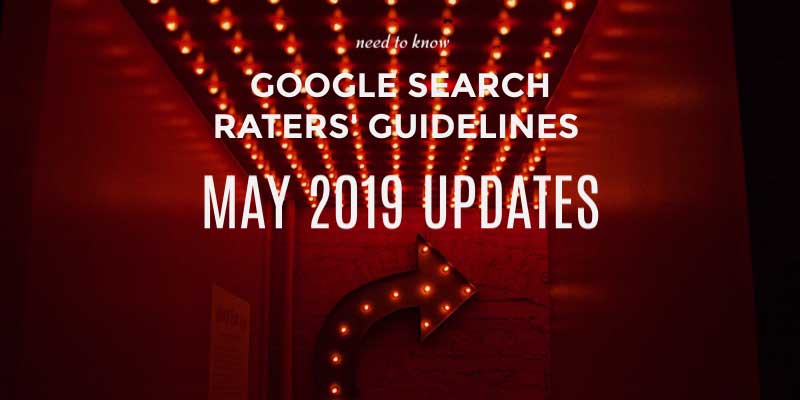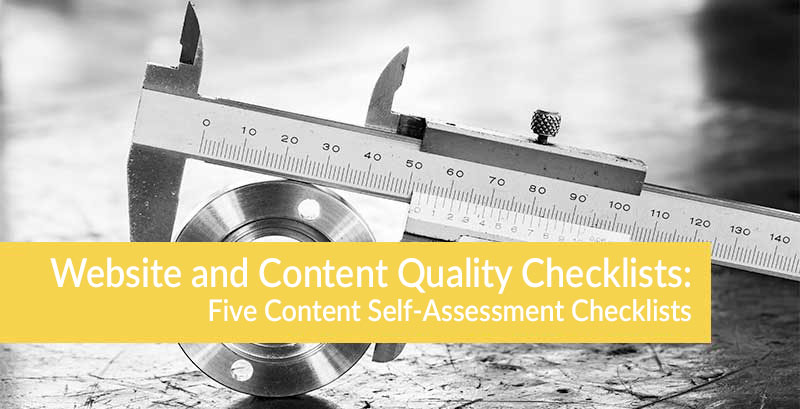On May 16, 2019, Google updated their Quality Rater Guidelines. These guidelines are used by real humans to evaluate the page quality and content quality of Google search results.
These human search consultants give Google search engineers feedback on what is and isn’t being displayed in the search results. This information (and much more) is used by Google software engineers to refine and update Google search algorithms.
And this is why you need to care about the updates to the Google Search Quality Raters’ Guidelines. These guidelines impact how and where your web pages appear in Google search results.
Now, we understand at Know Agency that you might not want to know the nitty-gritty details of how, why, when, where, and what happens when a customer searches for your company in Google.
But the more you understand about what the humans rating your website content are looking for – the easier it is for you to provide content that is going to get you found, clicked, liked, and stay relevant.
So, with this in mind, here are our 3 things you need to know about the Google Search Quality Raters’ Guidelines May 2019 updates.
The 3 Things You Need to Know About the Google Search Quality Raters’ Guidelines May 2019 Updates
- Impacts to Interstitials
Interstitials (those ads and pop-ups that appear when you visit a web page) are extremely common. Depending on the interstitial, it can be impossible to read the page without clicking the interstitial.
Google has instructed its search quality raters to focus on app download interstitials that hide or block content, trick visitors into downloading the app to read the content, or make it impossible to use the website without downloading the app.
Here is what Google says about these interstitials in its guidelines:
A single pop-over Ad or interstitial page with a clear and easy to close button is not terribly distracting, though may not be a great user experience. However, difficult to close Ads that follow page scrolls, or interstitial pages that require an app download, can be truly distracting and make the MC (Main Content) difficult to use. (Section 6.4 page 32)
Read Google’s blog post about these interstitials. - EAT and Page Quality
EAT still matters but there is a shift in the search quality guidelines to put a higher emphasis on Page Quality. Section 15.0 The Relationship between Page Quality and Needs Met on page 134, has been updated to reflect the change in focus to looking at the quality of the page and its content when rating the page.
But, it’s important to understand that EAT still matters. In fact, the EAT acronym still has a high-profile and gets a lot of attention in the updated guidelines. What this means for you is that you need to think both about the quality of your page content and make sure you’re creating content that displays expertise, authority, and trust.
In Part 1: Page Quality Rating Guideline, Google states:
Ultimately, the goal of Page Quality rating is to evaluate how well the page achieves its purpose. Because different types of websites and webpages can have very different purposes, our expectations and standards for different pages are also different.
And this Page Quality emphasis has changed how the human quality raters use the Page Quality Slider to evaluate your content. This is the paragraph we want you to remember when you’re writing webpage content or refreshing existing content:
Remember that if a page lacks a beneficial purpose, it should always be rated Lowest Page Quality regardless of the page’s Needs Met rating or how well-designed the page may be. Please review section 7.0 for a summary of other types of Lowest Page Quality pages. (Section 15.0 page 134)
So, yes EAT still matters but how your page is evaluated for quality depends on more than your ability to show EAT. Your content must be correct, useful, clear, helpful, well-designed, and well-written.
Hint: it’s worth looking at Section 7.0 in the Google Search Quality Raters’ Guidelines so you can clearly understand how search quality raters are looking at your website and webpages. - Showing Expertise
We’ve written a lot about the importance of showing expertise when publishing content and how Google looks for this expertise. Admittedly this is challenging for many website owners – how do you show and prove expertise?
In the May 2019 updates to the search quality rater guidelines, Google has changed the language around author expertise. The following excerpt is in response to a Page Quality Rating FAQ (Section 11.0 page 62):
Q: You talked about expertise when rating MC. Does expertise matter for all topics? Aren’t there some topics for which there are no experts?
A: Remember that we are not just talking about formal expertise. High quality pages involve time, effort, expertise, and talent/skill. Sharing personal experience is a form of everyday expertise.
Specifically for content creators, everyday expertise can be assessed based on the talent/skill level depicted in the MC (e.g., great hair-styling advice, painting/crafting abilities, skillful home/DIY work, etc.). In some cases where the content creator is not demonstrating formal or everyday expertise but is not doing any harm, Medium is an appropriate rating.
What this means that expectations around expertise have been relaxed around content that does not fall into the YMYL category. Remember, YMYL stands for Your Money, Your Life and is used when rating page content that impacts your money, your health, or your life.
Of course, quality content is still important – but proving that you are an experienced art teacher or have deep skills in bicycle mechanics are no longer critical. Though, we do recommend that if you don’t know anything about art or bicycles, you shouldn’t write about these topics….
The 166-page Google Search Quality Raters’ Guidelines document is available to anyone who wants to read it. If you read it, do contact me with your comments and questions. I’m always happy to chat with others about all things search and SEO.
How Do the Google Search Quality Raters’ Guidelines Impact You Right Now?
These changes mean you need to think twice before hitting publish.
- Make sure your content is well-written.
- For YMYL pages, make sure you are clearly showing your expertise, authority, and trustworthiness.
- Review your website design to make sure it displays and loads easily on mobile.
- Get rid of interstitials that can be considered intrusive or annoying. Hint: ask your mom to visit your webpage and see how she reacts to the interstitial…
- Think page quality. Think clear content.
And, if this just seems like a lot to think about – contact me and we’ll talk.
The Know Agency team will look at your website from all angles – SEO, content, technical design, look-and-feel, search results ranking, and keyword usage.
About the author
Jane Phelps is the CEO/Partner at Know Agency. Jane leads client SEO strategy and handles all aspects of in-house SEO demands. This includes providing SEO training, competitive analysis, keyword research, algorithm analysis, and the review of all new content to ensure SEO best-practices are followed. Jane holds a Master’s Certificate in Online Marketing from the University of San Francisco, is BrightEdge Certified and is the head of the BrightEdge User Group in Atlanta, GA.



